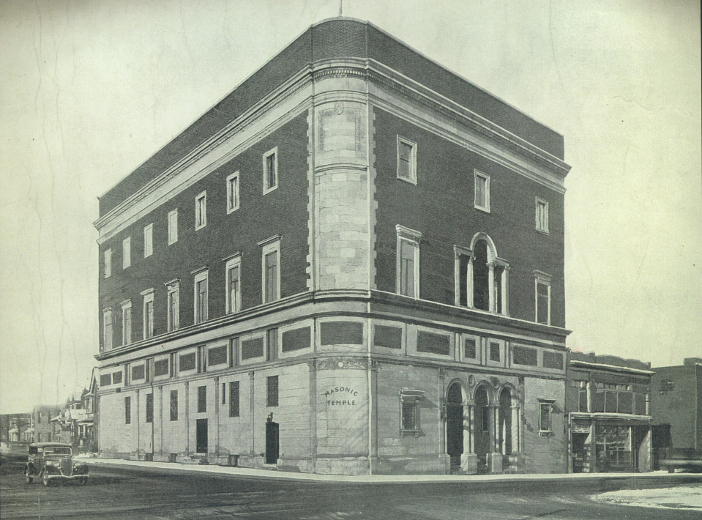History
St. Andrews No.16“There is no lodge in the world that has left its impress upon affairs and the community with more beneficial effect for the uplifting of man than St. Andrew’s Lodge, nor was there any other lodge within whose ranks there were more able and distinguished men, whose activities and whose benevolence were felt from ocean to ocean.”
– Most Worshipful Brother W.D. McPherson K.C, Grand Master of the Grand Lodge of Canada in the Province of Ontario (October 14, 1913)
St. Andrew’s Lodge #16 G.R.C. was instituted in the early fall of 1822 and chartered in December of the same year in the town of York (Toronto), Upper Canada.
In the early autumn of 1822, at the invitation of Sir William Campbell, a group of Masons met in his home to plan the formation of the new St. Andrew’s Lodge No. 1. The United Grand Lodge of England had conferred the name of St. Andrew’s Lodge on the Register of the Provincial Grand Lodge of Upper Canada.
As the first Master of St. Andrew’s Lodge, Sir William Campbell occupied the Chair of King Solomon from 1822 to 1824 laying the foundation for one of Canada’s most historic lodges.
Founding Members

1. Sir William Campbell – Chief Justice of the Supreme Court of Upper Canada
2. Thomas Ridout Sr. – Surveyor General of Upper Canada
3. John Henry Dunn – Receiver General for Upper Canada
4. Thomas FitzGerald – Barrister at Law
5. Major George Hillier – British Army Officer, Civil Secretary to Lieutenant Governor of Upper Canada
6. Lieut-Colonel Nathaniel Coffin – Adjutant General of the Upper Canadian Militia, fought in War of 1812
7. Colonel John Beikie – Sheriff of York; Defended York against American invaders in the War of 1812
8. Colonel Stephen Jarvis – Founding Director of the York Association, a banking house which preceded the Bank of Upper Canada; Officer of the Loyalist South Carolina Dragoons in the U.S. Revolutionary War
9. Colonel James FitzGibbon – Veteran of the Napoleonic Wars; Served in the War of 1812
10. Daniel Brooke – Retired officer of the British Army.
Notable Members of
St. Andrew’s
Samuel Harman
Mayor of Toronto
Sir Allan Napier McNab
Prime Minister of the United Province of Ontario
Andrew Smith
Principal of Ontario Veterinary College
W.B. McMurrich, Q.C.
Mayor of Toronto
Frederick Cumberland
Architect of St. James Cathedral
Sir Aemilius irving
Member of Parliment; Prosecutor in famous “Black” Donnellys case
John Patterson
Mayor of Toronto
John Shaw
Mayor of Toronto
Sir William Gage
Founded Canada’s first sanatorium; Director for the Impaerial Bank of Canada
Sir Sanford Fleming
Inventor of Standard Time
John G. Howard
Dontated High Park to the City of Toronto
Kivas Tully
Arhitect – Bank of Montreal (Front & Yonge), Trinity College, Osgoode Hall, Victoria Hall (Cobourg)
Sir Thomas Galt
Cheif Justice of Ontario
Anson Taylor
Director of Scarborough Board of Education
General Sam Hughes
General in World War 1; Minister of Defense
Charles Berczy
Founder of Consumer Gas
Dr. Edward Hodder
One of the founders of Toronto General Hospital
ST. JOHNS NO. 75
History & Amalgmation

In November of 1856, Bro. George B. Wyllie, a member of St. Andrews Lodge, held a meeting to draft a petition addressed to the United Grand Lodge of England. This petition requested a warrant to authorize the formation of a lodge to be known as St. Johns Lodge. On December 5th, 1856, two short months after the initial meeting, St. Johns Lodge was consecrated and assigned No. 55 on the provincial register with Bro. George B. Wyllie being appointed the first Worshipful Master of the lodge. It would later be reassigned No. 75 after the formation of the Grand Lodge of Canada in the Province of Ontario.
St. Johns eventually became known as the “Merchant Lodge” and first held its regular meetings in the lodge room over St. Lawrence Market. After this period, St. Johns moved into the Temple Building at Bay and Richmond Streets until they finally settled into the historic Masonic Temple at Yonge and Davenport for which they had called home for 76 years.
In 2005, a committee of St Johns members were tasked to review options for potential amalgamations. With declining membership, St Johns Lodge decided to find a new home for the then-current 100 members. With assistance from Grand Lodge, and with acknowledgement of the historical ties with St Andrew’s Lodge, discussions were initiated regarding the union of these two lodges. These discussions being agreeable to the members of both Lodges, it was decided that the lodges would coalesce under the name “St. Andrew’s 16 perpetuating St Johns 75”.
Contact
For He Who Knocks, The Door Shall be Opened



